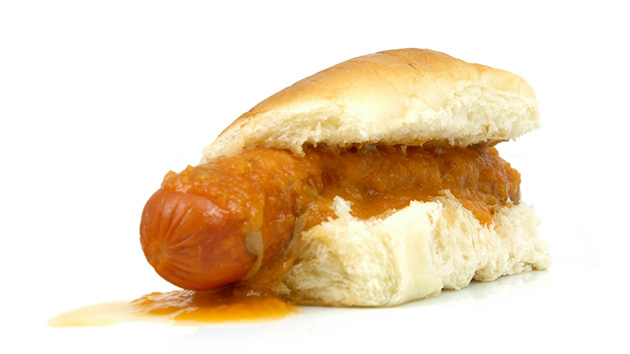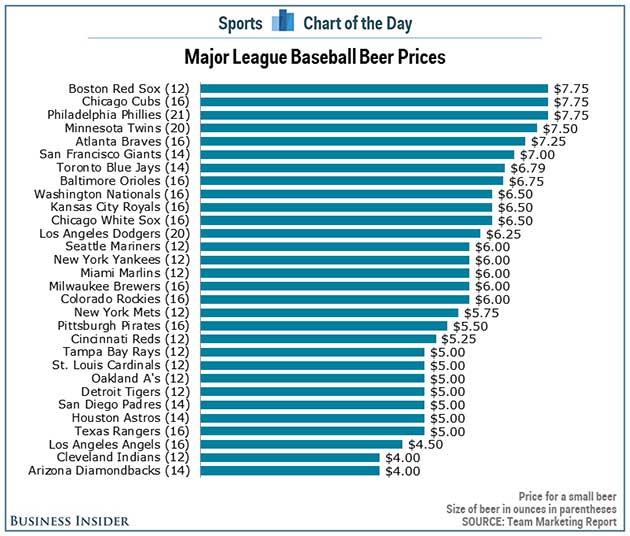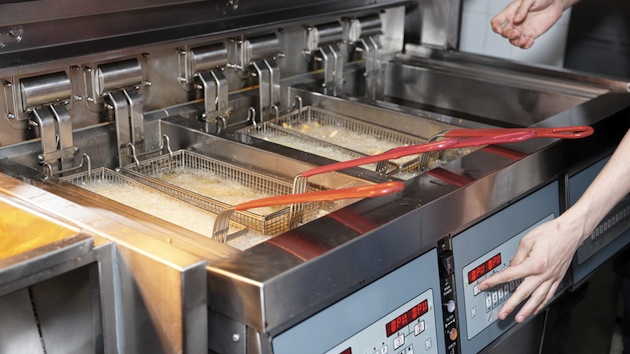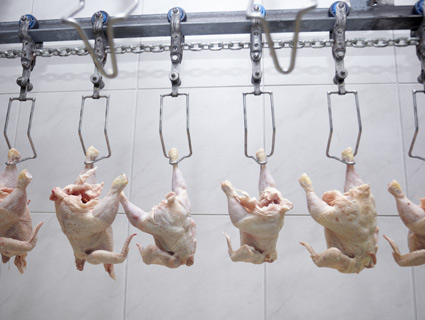
<a href="http://www.shutterstock.com/pic-2071871/stock-photo-hot-dog-bread-with-a-sausage-and-sauce.html?src=Cjo8J6W9EQcMfsrtvOpW1A-2-32">Vinicius Tupinamba</a>/Shutterstock
Five months ago, Jon Costa, a food safety manager for Aramark, told ESPN and local media outlets about the dire conditions in the kitchens at Kansas City’s Kauffman Stadium (home to baseball’s Royals) and Arrowhead Stadium (home to football’s Chiefs). He discovered roaches in the vending area, mouse feces near pizza dough, mold growth in ice machines, and employees eating where food was supposed to be prepared.
KSHB reported that the Kansas City Health Department found critical violations at 20 of Kauffman’s concession stands last November, after Costa came forward following the Royals’ World Series loss. In a letter to ESPN that month, an Aramark official refuted Costa’s allegations, which included expired pizza dough being served during Game 7 of the World Series, as “unsubstantiated claims raised by a disgruntled employee.” Still, Aramark enlisted an external inspector to conduct additional sweeps of concessions and increased training for its staff. (Costa, meanwhile, was fired in March.)
It’s not just Kansas City: A 2010 investigation by ESPN’s Outside the Lines found that, in nearly 30 percent of MLB, NBA, NHL, and NFL stadiums and arenas, more than half of the food venues had received citations for a “critical” or “major” health violation. And in the last two years, Arizona State University’s Cronkite News Service reported that health inspectors in Maricopa County, Arizona, discovered “at least one food-safety violation within eight of the nine ballparks that host Cactus League spring training games,” including finding a dead rodent with feces in a vendor’s kitchen at Scottsdale Stadium.
Of course, even the stadium food without bacteria might make you sick—especially those over-the-top pseudo-regional specialties (e.g., pulled pork mac ‘n’ jack sausage) that are often loaded with saturated fat and sugar. Now that baseball season is back in full swing, here are 10 of the most stomach-turning (or, depending on your tastes, delectable) dishes on ballpark menus this year:
Brunch Burger, PNC Park (Pittsburgh Pirates)
@Pirates Brunch Burger a beef/bacon patty topped with more bacon and cheese on glazed donut #nationalsandwichmonth pic.twitter.com/peGHyt7F41
— Aramark Sports (@AramarkSports) August 29, 2013
Totally Rossome Boomstick, Rangers Ballpark in Arlington (Texas Rangers)
@darrenrovell the Totally Rossome Boomstick at the Rangers game pic.twitter.com/sXWuAMTuuW
— Kaleb Herren (@kalebherren) April 6, 2013
Southwest Pork Mac & Cheese Waffle, Comerica Park (Detroit Tigers)
New at Tigers games: Southwest Pork Mac & Cheese Waffle (via @Bill_Shea19) pic.twitter.com/jvj9Z48OBV
— Darren Rovell (@darrenrovell) April 4, 2015
Chicken Fried Bacon on a Stick, Rangers Ballpark in Arlington (Rangers)
Chicken Fried Bacon On A Stick at Texas Rangers games this season (via @startelegram) pic.twitter.com/OdTaqWWKUy
— Darren Rovell (@darrenrovell) April 4, 2015
Custard Donut Sandwich, Miller Park (Milwaukee Brewers)
New at Brewers games: Custard Donut Sandwich w/pretzels, caramel & peanut butter (H/T @cmoyer) pic.twitter.com/9rJaUIWnBt
— Darren Rovell (@darrenrovell) April 2, 2015
Rocky Mountain Oysters, Coors Field (Colorado Rockies)
Rocky Mountain Oysters make @SarahKogod‘s list of ballpark foods that might just kill you http://t.co/uTW3iSCoPo pic.twitter.com/cmXYtMd5CS
— Purple Row (@PurpleRow) April 6, 2015
Fried Nachos on a Stick, Miller Park (Brewers)
Fried nachos on a stick will be a reality for Milwaukee @Brewers fans http://t.co/dkspQ7Y0EA pic.twitter.com/9QXINGQXvU
— Paste Magazine (@PasteMagazine) March 30, 2015
Churro Dog, Chase Field (Arizona Diamondbacks)
The @Dbacks‘ “Churro Dog” will set you back 1,117 calories, but it might be worth it. http://t.co/rJuNAjcY6j pic.twitter.com/UGOQR5WXMU
— Sporting News (@sportingnews) April 1, 2015
Pulled-Pork Parfait, Miller Park (Brewers)
@Johnston985 @flynn985 After a the “Down Wisconsin Ave” Brat I’d have to have dessert. Mmmm #PulledPorkParfait pic.twitter.com/vpO5bBodaI
— Mike From Attleboro (@MikeFromATown) March 29, 2015
Triple-Triple Wayback Burger, Citizens Bank Park (Philadelphia Phillies)
New at Phillies games: The “Triple Triple” Wayback Burger (9 patties & 9 slices of cheese) pic.twitter.com/cXA5gCbiQw
— Darren Rovell (@darrenrovell) April 1, 2015
And if you want a beer to wash down that grossness, it’ll cost you.













